AMD has unveiled a new addition to its Radeon PRO W6000 GPU series that caters specifically to the needs of the typical knowledge worker.
The new Radeon PRO W6400 sits below the W6600 and W6800 in the lineup in terms of raw power, but is tuned to deliver optimal performance across the most common professional use cases. It’s described by AMD as the company’s new “king of mainstream graphics workloads”.
The W6400 features 4GB GDDR6 RAM, two DisplayPort connectors and PCIe 4.0 support, and delivers a performance of up to 3.54TFLOPS (per the FP32 benchmark) at a peak power consumption of 50W.
The new graphics card will go on sale at $249, which is slightly more expensive than the previous generation WX 3200, but less costly than comparable Nvidia models. TechRadar Pro is awaiting confirmation of international pricing.
The typical graphics workload
The design of the Radeon PRO W6400 was informed by research conducted by AMD, which sought to establish a picture of the most common business workloads, and therefore the precise graphical needs of the average worker.
During a briefing attended by TechRadar Pro , the company unpacked some of its findings. For example, AMD found that a third of professionals use two monitors , the majority of which still have a 1080p resolution. To save space and cut costs, then, AMD opted for two instead of four display connectors.
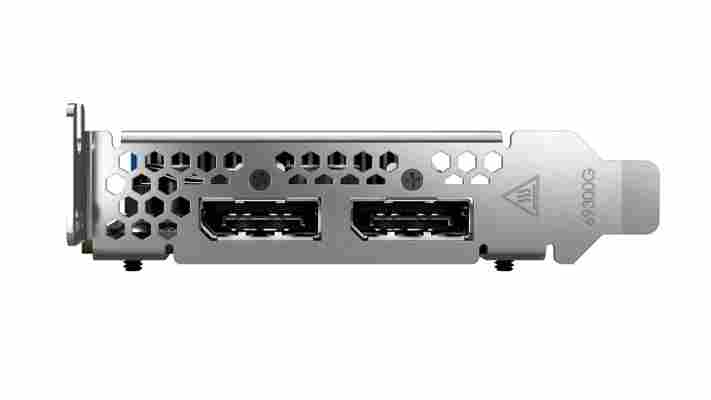
Equally, the company saw that the average worker spends most of their time using video conferencing software , productivity tools and web browsers . Although professionals working with more demanding CAD and 3D rendering software will be better served by more performant models, the W6400 offers plenty of performance for regular office workloads.
“It’s not about how much the GPU is being pushed,” said Jamie Gwilliam, Senior Manager at AMD. “The takeaway is that a balanced system is best for typical knowledge workers. Sometimes the GPU is doing the heavy lifting, sometimes it’s the CPU .”
“Although it’s a light workload GPU, you are sacrificing neither hardware nor software functionality. That’s why we think it will be our new king of mainstream workloads.”
Performance advantage
Inevitably, the Radeon PRO W6400 does not deliver the same level of performance as its larger and more expensive W6000 series peers. However, AMD says its newest GPU outperforms comparable models from Nvidia by a comfortable margin.
Built on a 6nm process, the W6400 offers superior peak TF performance than both the Nvidia T1000 (2.5TF) and T600 (1.7TF), both of which are more expensive.
It also either matches or outperforms the T600 across spreadsheet , web browsing and video conferencing workloads, and the performance advantage becomes more stark for image editing and CAD. It’s worth noting, though, that AMD did not provide equivalent comparisons between the W6400 and T1000.
Like the other cards in the W6000 series, the W6400 also benefits from AMD’s trademark Infinity Cache technology, which allows for a doubling of the effective bandwidth in some scenarios (reaching up to 289GB/s), depending on the software in use.
The best headphones, earbuds, and hi-fi gear from CES 2022
Anyone hoping for a relatively normal CES experience in 2022 was disappointed when Covid-19 forced many exhibitors to pull out of the Las Vegas tech expo at the last minute. Happily, though, we haven’t been disappointed by the audio products and technologies on display this year.
CES is the place to find the weirdest and wackiest developments in the world of tech, not to mention the most important innovations. This year was no exception. It was the smaller audio brands that really stole the spotlight this year, however, with many of the larger audio companies having a more subdued presence than normal.
We’ve seen everything from invisible headphones to Bluetooth speakers with never-ending battery lives, alongside the usual gamut of true wireless earbuds , soundbars , and record players – giving us a real taste of what we can expect from the coming year in audio.
So, while CES 2022 may not have been the return to normal we were hoping for (and really, what does normal ever mean where CES is concerned?), it’s still been a bumper show for all things audio. Here are a few of our favorite products and technologies to come out of Vegas this year.
Headphones should be heard and not seen
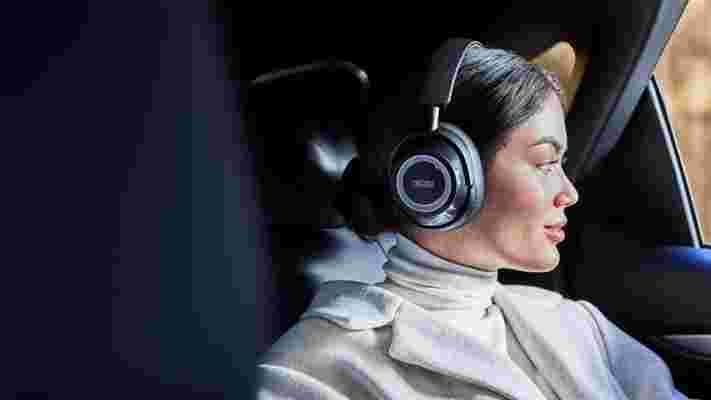
There are always lots of headphones to see at CES. This year’s offering included some truly wacky technologies alongside conventional audiophile over-ears that’ll appeal to discerning listeners.
Mark Levinson, the company best known for its high-end hi-fi gear, launched its first pair of headphones at the show. The Mark Levinson No. 5909 are among the most high-spec cans we’ve seen, coming with 40mm beryllium drivers, hi-res audio support, active noise cancellation, and 34-hour battery life.
They’re also the most expensive headphones we’ve seen at CES this year; they’ll set you back a cool $999 (about £750 / AU$1,400). Ouch.
If that price is out of the question, we also saw some excellent Sony WH-1000XM4 rivals from Shure. The Shure AONIC 40 cost $249 / £215 (about AU$345). For that you get a stylish foldable design, ANC, 40mm neodymium dynamic drivers, and adjustable EQ settings – and at $100 / £134 less than Sony’s flagship cans.
However, our favorite pair of headphones from CES was a very different beast to the Mark Levinsons and Shures of the world. In fact, it’s not a pair of headphones at all.
The Noveto N1 is a genuinely innovative device that's effectively a pair of 'invisible headphones.' Looking a bit like a soundbar, this clever gadget beams ultrasound to ‘pockets’ of air just outside your ears. You'll hear your music as if you were wearing actual headphones, while people around you are none the wiser.
That’s right – nobody else will be able to hear your music. And, clever head-tracking tech means the sound should always hit the right spot, even if you move around. That’s the kind of tech CES is all about. We can’t wait to try it for ourselves.
True wireless earbuds are getting cheaper
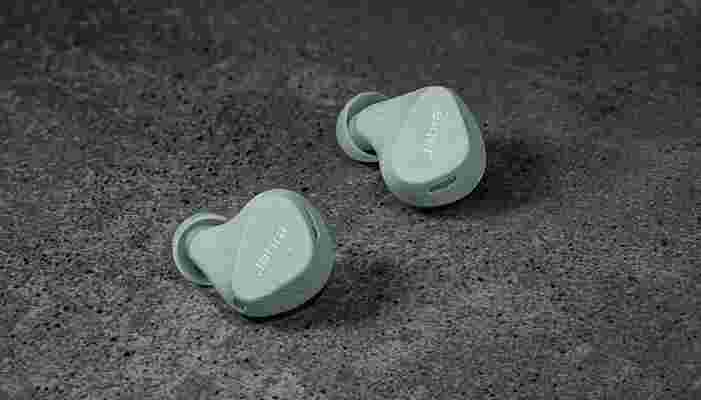
There were lots of new true wireless earbuds to see at CES this year. While none of them can be said to be truly innovative, the latest models show just how far the form factor has come – and how affordable it can be these days.
JBL released three true wireless earbuds models at CES. All retail for $149.95 (about £115 / AU$210) and none of them skimp on the specs. The Live Pro 2, for instance, comes with adaptive noise cancellation, up to 40 hours of battery life, and six microphones equipped with noise and wind isolation.
Jabra also launched a more affordable pair of wireless earbuds. The Jabra Elite 4 Active are among the most comprehensively specced buds we’ve seen at their price. They’ll cost you just $119 / £119 / AU$179, and give you good audio performance, decent noise cancellation, adjustable EQ settings, and competitive 28-hour battery life.
Perhaps the most interesting buds to come from the show are the Belkin Soundform Immerse , which could make a great cheaper alternative to the AirPods Pro . Retailing at $179.99 (about £130 / AU$250), these sleek-looking buds pack in lots of the same features as Apple’s noise-canceling earbuds , as well as hi-res audio support.
None of these models represent huge advances in true wireless technology. However, they do demonstrate how manufacturers are beginning to offer previously premium features at lower prices. We predict CES 2023 will be a bit more exciting in this regard, as brands begin to incorporate Qualcomm’s aptX Lossless codec , which will allow for lossless audio streaming over a wireless network.
So far, this hasn’t been possible due to bit rate limitations. However, Qualcomm says the audio afforded by this codec – which is expected to come to the next generation of wireless earbuds and headphones – will be “mathematically bit-for-bit exact,” so you won’t lose any data over a wireless connection or any precious detail in your music.
Record players that do it all
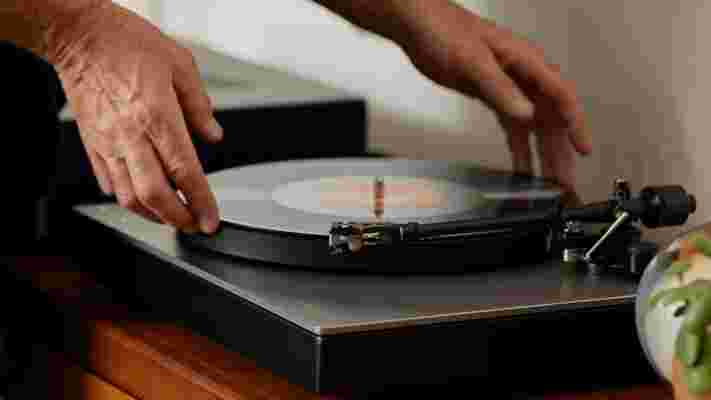
It’s been a great CES for record players. The best turntables to come from this year’s expo showcased a fantastic mix of modern conveniences, like wireless streaming and portability, with all the nostalgia of spinning vinyl on a great deck.
Cambridge Audio unleashed two new record players : the Alva TT V2 and the Alva ST, with the former acting as the successor to the world’s first aptX HD Bluetooth turntable.
As well as offering hi-res wireless streaming, the Alva TT V2 comes with a detachable headshell and switchable phono stage, so you can upgrade the record player over time.
At $1,999 / £1,700 (about AU$2,770), it’s the most high-spec record player to come from CES 2022. The most exciting turntable was the bargain Victrola Re-Spin .
This $99.99 / £99 (about AU$140) suitcase turntable comes in a range of bright colors and boasts a built-in Bluetooth speaker and cute, portable design. While it doesn’t have a built-in battery, one of Victrola’s other CES offerings does – and it’s the first record player to do so.
The Victrola Revolution GO comes with a rechargeable battery, lightweight build, and built-in Bluetooth speaker. It even has a detachable guitar strap, so you can carry it around like a handbag.
While it’s not the best-sounding turntable we’ve ever tested, we were impressed by how well it works, and how easy it is to use. For $199.99 / £199 (around AU$280), it works well, plays at a loud volume, and lets you take your vinyl on the move. That’s a true innovation worthy of CES.
Speakers that keep the party going… forever
There weren’t many speakers that really caught our eye at CES 2022. In fact, the one model that did is a prototype that won’t actually hit the market.
The portable speaker was created by tech companies Exeger and Mayht, and its innovative design could really shake up the Bluetooth speaker market . Designed with Exegers Powerfoyle material, it can convert any light source into energy, giving the speaker virtually infinite battery life.
Not only that, but the prototype device also contains a new kind of dual-membrane driver created by Mayht, which the company claims can match the power of a speaker 10 times its size.
It’s a shame that the public will never get their hands on this particular device, but this prototype speaker does give us a great insight into what wireless speakers of the future might look (and sound) like.
NASA’s James Webb Space Telescope has reached its destination. Now what?
On January 8, 2022, arguably humankind’s greatest engineering achievement came to fruition about a half a million miles behind our planet. After 20 years in development, $10 billion spent, and 14 nail-biting days of exquisite hi-tech origami in space, the James Webb Space Telescope (JWST) was fully deployed.
After successfully launching from the Guiana Space Centre in French Guiana on Christmas Day while folded-up in the fairing of the Ariane 5 rocket, engineers remotely controlled 50 moving parts and 178 release pins. Everything had to happen correctly, in sequence, to put Webb in its final configuration. It worked.
This Monday, January 24, after a 30-day journey into space, Webb arrives at its final destination. A dream realized? Not yet. This is what happens next.
What is Webb?
Webb is the biggest and the most advanced space observatory ever constructed. About 100 times more powerful than Hubble, Webb is the size of a 70-foot tennis court. Its massive 21.6-foot primary mirror (to Hubble’s 8-foot primary mirror) is made from super-strong beryllium and comprises 18 hexagonal segments.
Each segment is covered in gold, which is perfect for reflecting infrared light. And that’s the main difference between Webb and Hubble. Unlike Hubble, which looks at the universe in visible and ultraviolet light, Webb captures ancient, stretched infrared light. That, coupled with its larger mirror, means it can look further back in time than astronomers have ever been able to do before.
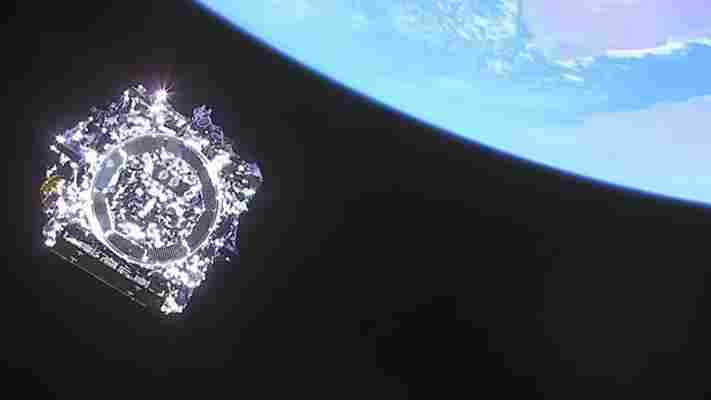
Will Webb really look back in time?
All telescopes are time machines. The light from every single star you see is old and has travelled very far to reach you. Even the Sun’s light is 8 minutes and 20 seconds old. The brightest star in the night sky, Sirius, is 8.6 light-years away. That means its light has travelled for 8.6 years at 186,000 miles per second to reach your eyes.
Every photon Webb will detect is old light, but since it’s an infrared telescope it will detect the very oldest, most ancient light. Infrared light is electromagnetic radiation with wavelengths longer than visible light, so it is imperceptible to the human eye.
The very oldest light in the universe – emitted soon after the Big Bang 13.8 billion years ago, when the first stars and galaxies formed – has been stretched by the expansion of the Universe, so it is deeply red. So red in fact that it falls off the visible light spectrum entirely and into the infrared spectrum.
Webb will be able to study those very first stars and galaxies a few hundred million years after the Big Bang, something no other telescope has been able to do. That is why Webb was built.
Where is Webb?
The Webb telescope is currently here . Although it’s too small and dim to see with the naked eye, look out at night and Webb will be out there. It’s currently in the constellation of Monoceros, slightly east of Orion’s Belt. Webb is always going to be on the night-side of our planet so it can always get a clear view of deep space.
Webb has journeyed a million miles/1.5 million kilometers from Earth to what’s known as the second Lagrange point (L2) . This is a very important position in space relative to Earth.
Named after an Italian mathematician, L2 is a point of gravitational balance on the far side of Earth away from the Sun – about four times the distance of the Earth to the Moon – where the gravity of the Earth and Sun combine here to create a relatively stable location.
It’s a place where Webb can keep the Sun, Earth and Moon behind it at all times, aiming its solar panels backwards while its mighty mirror is simultaneously shielded from sunlight by its five tennis court-sized sunshield panels. L2 is also a handy place because it’s close enough to Earth for us to maintain easy communications.
Webb is unlike most space telescopes – Hubble included – that look out at space while orbiting Earth. So while Hubble was famously fixed by Space Shuttle astronauts in 1993 after launching a few years prior with an optical abnormality, Webb is too far away to fix if something goes wrong.
However, it won’t be there alone; the European Space Agency’s Gaia 3D star-mapper is orbiting L2 right now, and the Roman Space Telescope will arrive in 2027.
What will Webb do now?
With the mechanical unfolding of the observatory complete, the engineers got on with aligning the mirrors. Remotely moving each of the 18 primary mirror segments and the secondary mirror out of their launch configuration, they tinkered with the curvature of each mirror segment to set the overall shape of Webb’s primary mirror.
NASA says it could take until April 24 to align the 18 hexagonal gold-covered beryllium segments to create Webb’s primary mirror.
“This telescope is not ready out of the box and the first images are going to be ugly – it’s going to be blurry,” said Jane Rigby , Webb Operations Project Scientist, NASA Goddard Space Flight Center, at a press briefing in January. Engineers will effectively have 18 images that need to be stitched together into one telescopic image.
It’s going to be exacting work. “We start with the mirrors off by millimeters and we're driving them to be aligned to within less than a size of a Coronavirus – to 10s of nanometers,” said Rigby. “It’s a very deliberate process that is time consuming.”
Once that process is over – by mid-March or thereabouts – engineers will take about two months to point Webb at some bright stars to properly collimate and focus the telescope. They will then test and commission Webb’s four main science instruments as they cool down to a temperature of -370 degrees Fahrenheit/-223 degrees Celsius.
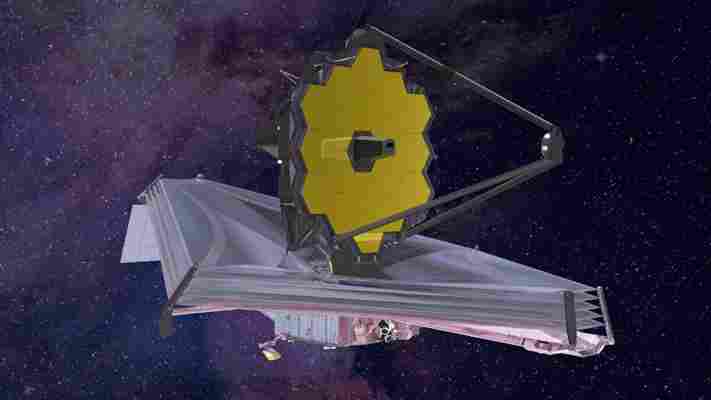
NASA says not to expect the first showpiece photos from Webb until about five months after launch, once commissioning ends, which on current timescales is late May.
“We want to make sure that the first images that the world sees do justice to this $10 billion telescope,” said Rigby. She wouldn’t be drawn on exactly what the "wow" images would be of, but expect to see Webb’s deep infrared overlays on classic Hubble images such as the Horsehead Nebula and the Pillars of Creation .
With Webb safely at its destination we can now look forward to a new era in astronomy.